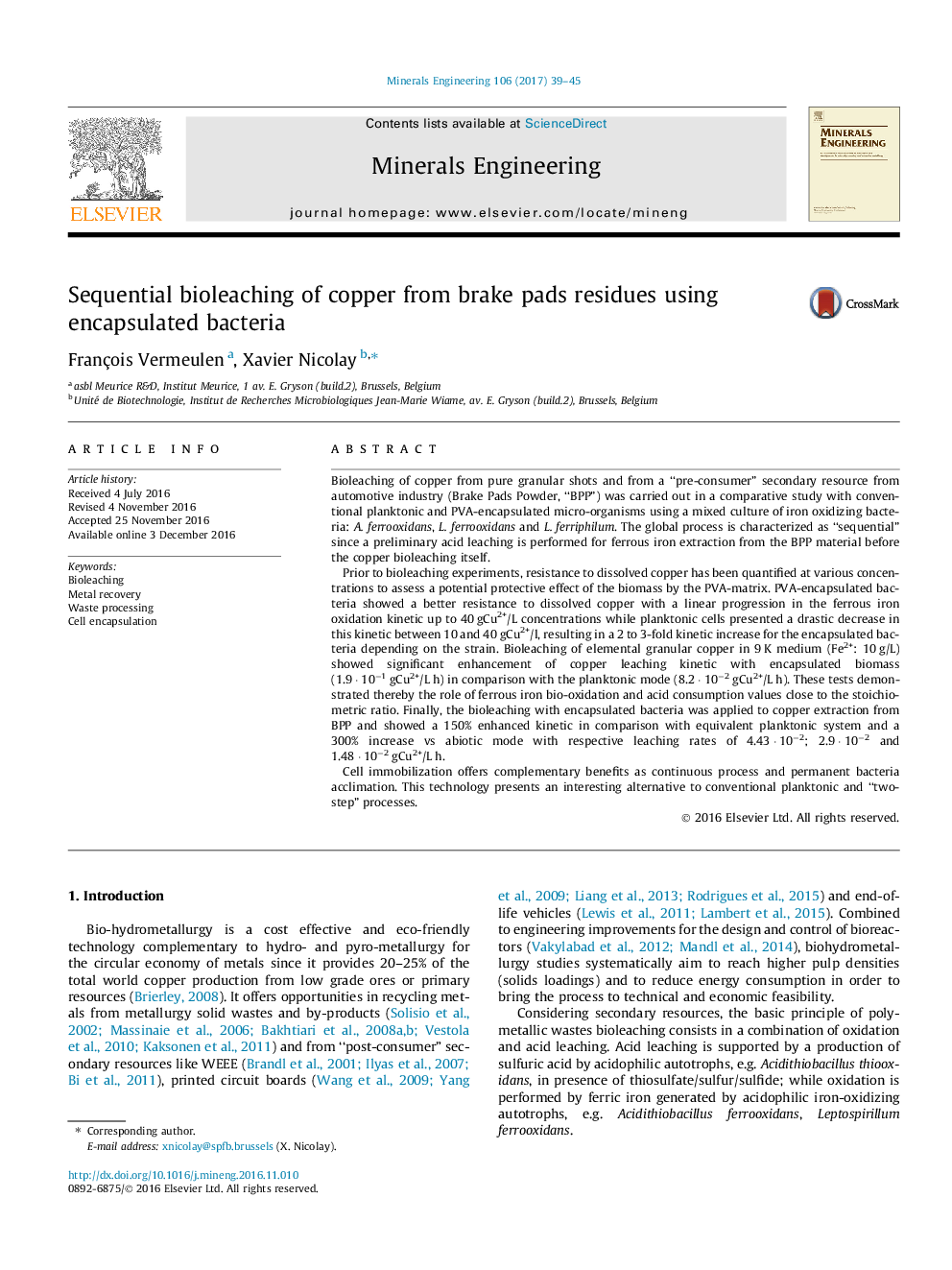| کد مقاله | کد نشریه | سال انتشار | مقاله انگلیسی | نسخه تمام متن |
|---|---|---|---|---|
| 6477818 | 1427606 | 2017 | 7 صفحه PDF | دانلود رایگان |
- Innovative combination of bacterial encapsulation technology and bioleaching process.
- Bioleaching of automotive industry “preconsumer” secondary resource: brake pads dust.
- Comparative copper resistance test encapsulated vs planktonic biomass.
Bioleaching of copper from pure granular shots and from a “pre-consumer” secondary resource from automotive industry (Brake Pads Powder, “BPP”) was carried out in a comparative study with conventional planktonic and PVA-encapsulated micro-organisms using a mixed culture of iron oxidizing bacteria: A. ferrooxidans, L. ferrooxidans and L. ferriphilum. The global process is characterized as “sequential” since a preliminary acid leaching is performed for ferrous iron extraction from the BPP material before the copper bioleaching itself.Prior to bioleaching experiments, resistance to dissolved copper has been quantified at various concentrations to assess a potential protective effect of the biomass by the PVA-matrix. PVA-encapsulated bacteria showed a better resistance to dissolved copper with a linear progression in the ferrous iron oxidation kinetic up to 40 gCu2+/L concentrations while planktonic cells presented a drastic decrease in this kinetic between 10 and 40 gCu2+/l, resulting in a 2 to 3-fold kinetic increase for the encapsulated bacteria depending on the strain. Bioleaching of elemental granular copper in 9 K medium (Fe2+: 10 g/L) showed significant enhancement of copper leaching kinetic with encapsulated biomass (1.9 · 10â1 gCu2+/L h) in comparison with the planktonic mode (8.2 · 10â2 gCu2+/L h). These tests demonstrated thereby the role of ferrous iron bio-oxidation and acid consumption values close to the stoichiometric ratio. Finally, the bioleaching with encapsulated bacteria was applied to copper extraction from BPP and showed a 150% enhanced kinetic in comparison with equivalent planktonic system and a 300% increase vs abiotic mode with respective leaching rates of 4.43 · 10â2; 2.9 · 10â2 and 1.48 · 10â2 gCu2+/L h.Cell immobilization offers complementary benefits as continuous process and permanent bacteria acclimation. This technology presents an interesting alternative to conventional planktonic and “two-step” processes.
Journal: Minerals Engineering - Volume 106, 15 May 2017, Pages 39-45
